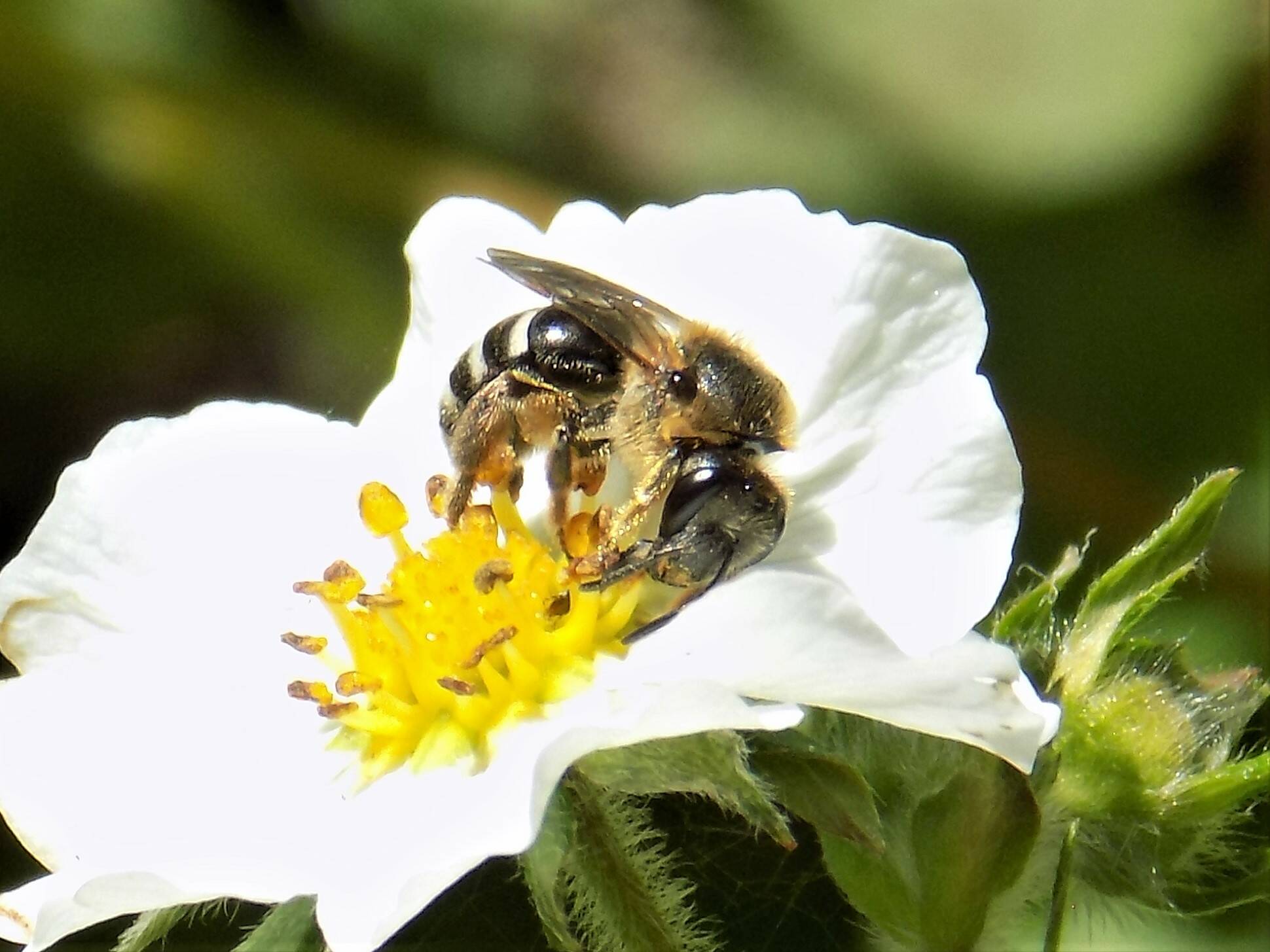By Russel Barsh,
Director of Kwiaht and Journal contributor,
Five small native bees of the genus Halictus are among the most eclectic and important pollinators in the islands, but because they are shy and nonaggressive they are, often overlooked. Their name is derived from the Greek halos (“salt”), and their family, the Halictidae, the second-largest bee family in the world, is commonly called the “sweat bees”.
What have bees got to do with salt or sweat, you may ask!
At least some “sweat bees” in Eurasia have a reputation for landing on people to lick salty perspiration or even tears. But much of the evidence for this remains folkloric. What we do know, thanks to a recent study led by Carrie Finkelstein at the University of Vermont, is that many bee species prefer nectar that is high in sodium. This implies that these particular bees, at least, are sodium-limited and need to take advantage of sodium sources in their environment—sodium-rich flower nectar, a puddle in salty soil, or a sweaty human.
The evolutionary origins of sodium limitation in bees are uncertain. Sodium is the essential ion in nerve transmission, and indeed some pesticides work by interfering with sodium metabolism in insects. Nectar and pollen provide bees with a diet rich in sugars and protein, but is their diet naturally poor in sodium, compared with the fleshy diet of their distant wasp ancestors? Yes, in fact. Pollen is low in sodium, and switching to pollen as a source of protein exposed bees in some habitats to sodium deficiency.
But there is a lot more to sweat bees than salt.
Halictus and many other sweat bee genera evolved from eusocial wasps and have retained, or perhaps revived, some aspects of sociality. Sweat bees not only tend to dig their ground-tunnel nests in clusters but often dig connecting tunnels underground, sharing guard duties and provisions. Sometimes, the nest complex is dominated by a clique of several queens, each of whom raises and commands about 20 female workers and a few males.
Even within a single sweat bee species, however, local populations may be more solitary or more social depending on the environment. In relatively cool, wet habitats where ground-nesting bees suffer greater winter losses from flooding and freezing, sweat bees tend to be more social, increasing the odds of survival by pooling their foraging and larval-rearing efforts. The ability of sweat bees to respond to changing local weather conditions by forming cohesive but temporary social groups that persist for a few generations is quite remarkable.
Sweat bees live communally often enough that a clade of tiny nematode worms has evolved to live inside the Dufour’s glands of female sweat bees, passing from bee to bee with no apparent adverse impacts on their bee hosts. The Dufour’s gland itself produces and dribbles out pheromones that some bees and ants utilize for social communication and making scent trails.
The San Juan Islands’ sweat bees are faithful generalists like bumblebees. They visit native wildflowers, as well as garden vegetables such as onions, carrots, cabbage and broccoli, and fruits including apples, plums, cherries, grapes, and (as seen in this photo) strawberries. Sweat bees will nest in patches of undisturbed soil and become garden residents; but it is crucial to avoid tilling or otherwise disturbing nest clusters, and use no pesticide sprays, even if they claim to be “green,” “safe,” or “organic”. Sprays can drift across your garden and wet the soil around ground-nesting bees entryways, poisoning entire bee communities. They can also wet pollen in any open flowers nearby, poisoning all visiting pollinators as well as the larval bees that are fed the tainted pollen.
And yes, adding a small drop of salty water to a few of your large, pollen-rich garden blooms may get the attention of sweat bees and make them a bit more likely to stick around!
Ask a Biologist!
If you have questions about the conservation of pest-munching bats or insect pollinators around your home, farm or garden, or would like Kwiaht to organize a virtual workshop on a particular topic, send an email to:




